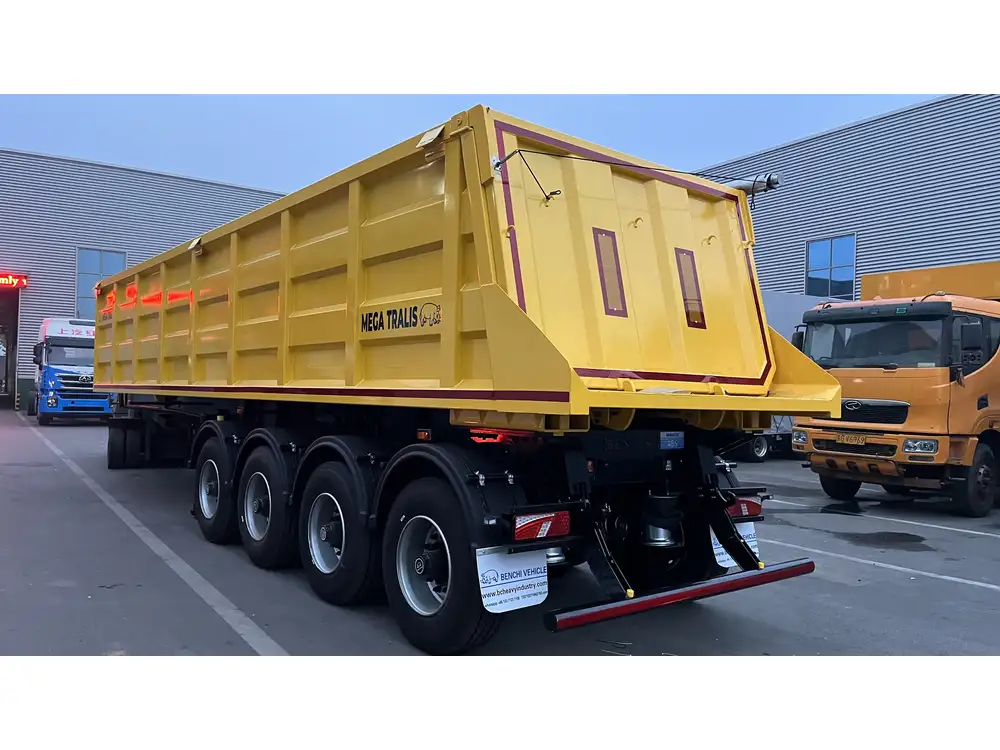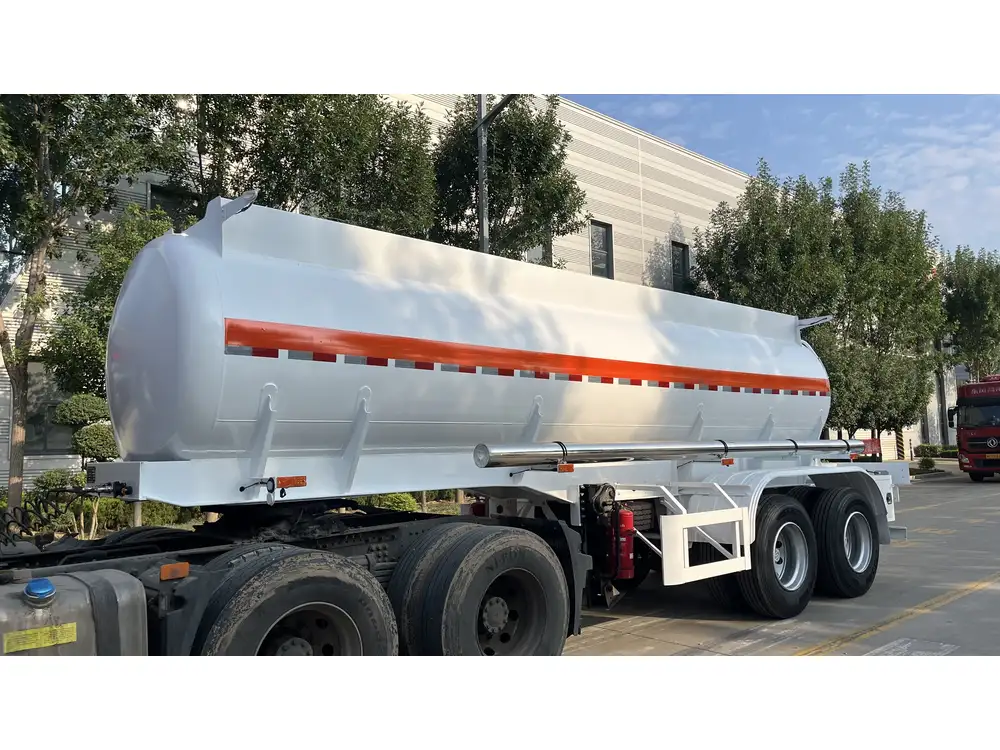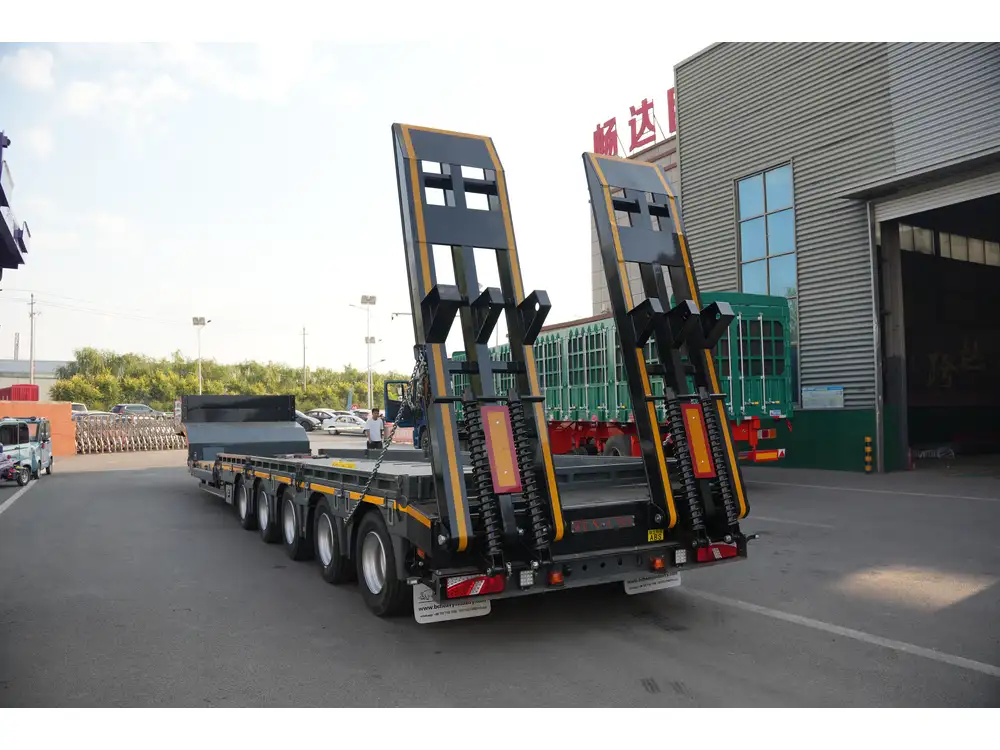When it comes to logistics and transportation, understanding the capacities of various trailers is crucial. Among these, the 53-foot trailer is one of the most commonly used in the freight transportation industry. This article explores the dimensions, volume calculations, and practical applications of a 53-foot trailer, providing insights that are vital for both shippers and carriers.
The Dimensions of a 53-Foot Trailer
Before delving into the volume, it’s essential to establish the basic dimensions of a standard 53-foot trailer:
| Dimension | Measurement |
|---|---|
| Length | 53 feet (636 inches) |
| Width | 8.5 feet (102 inches) |
| Height | 9.5 feet (114 inches) |
Calculating the Volume of a 53-Foot Trailer
The cubic footage of a trailer is calculated using the formula:
[ \text{Volume (cubic feet)} = \text{Length (ft)} \times \text{Width (ft)} \times \text{Height (ft)} ]For a 53-foot trailer, substituting the dimensions yields:
- Length = 53 feet
- Width = 8.5 feet
- Height = 9.5 feet
Thus, the calculation becomes:
[ \text{Volume} = 53 \times 8.5 \times 9.5 ]Calculating this out gives:
- Volume = 53 × 8.5 = 450.5
- 450.5 × 9.5 = 4279.75 cubic feet
Therefore, a standard 53-foot trailer has a total approximate volume of 4,279.75 cubic feet.

Practical Capacity Considerations
While the theoretical capacity provides a good baseline, practical load considerations can significantly affect how much cargo can be effectively transported.
Weight Limits
A 53-foot trailer is often subject to specific weight limits, which can vary based on the configuration of the trailer, local regulations, and the type of cargo. Standard weight limits for full trucks can include:
- Gross Vehicle Weight Rating (GVWR): Often around 80,000 pounds, including the weight of the trailer.
- Typical load capacity: 26,000-40,000 pounds, depending on the freight.
When considering the weight of cargo, it’s essential to keep in mind that the total weight must not exceed these limits to ensure legal operation on roadways without penalties or safety hazards.
Load Distribution
Successful transport also hinges on how well cargo is distributed throughout the trailer. Proper load distribution minimizes the risk of accidents and mechanical issues while maximizing the available space. Major considerations include:
- Uniform Weight Distribution: Ensuring that the weight is evenly spread prevents overloading one section.
- Securing the Load: Use straps, nets, or other securing methods to prevent shifting during transit.

Types of Cargo Suitable for 53-Foot Trailers
Understanding the types of cargo that best fit within a 53-foot trailer’s dimensions and capacity can assist logistics planners in optimizing transport strategies. Below are common cargo types:
| Cargo Type | Notes |
|---|---|
| Palletized Goods | Standard sizes allow for efficient loading and unloading. |
| Furniture | Often bulky; a 53-foot trailer can comfortably accommodate multiple pieces. |
| Clothing and Textiles | Typically loaded in bulk, requiring careful stacking and securing. |
| Electronics | Requires additional cushioning and protection against shock and temperature variations. |
| Refrigerated Goods | When fitted with a refrigeration unit, can effectively transport perishable items. |
The Importance of Proper Loading Techniques
Loading a trailer efficiently not only maximizes the cargo space but also enhances fuel efficiency and minimizes transportation costs. Here are essential techniques:
Load from the Heaviest to the Lightest: Start by placing heavier items first to lower the center of gravity, ensuring stability during travel.
Use Pallets or Containers: Standardized sizes help stack and arrange goods effectively, reducing time spent loading and unloading.
Maximize Vertical Space: Utilize the height of the trailer by stacking items appropriately, always ensuring that the weight remains stable and secure.
Alternative Trailer Options Compared to 53-Foot Trailers
While 53-foot trailers are the industry standard, other trailer sizes may be better suited for specific applications. Here’s a brief comparative analysis of various trailer types:
| Trailer Type | Length | Capacity (Cubic Feet) | Best Suited For |
|---|---|---|---|
| 48-Foot Trailer | 48 feet | Approximately 3,600 | Smaller loads, local deliveries |
| 40-Foot Trailer | 40 feet | Approximately 3,200 | Heavy equipment, specialized shipments |
| Flatbed Trailers | Varies | Varies | Oversized loads, construction materials |
| Refrigerated Trailers | Varies | Varies | Perishable goods |

Advantages and Disadvantages of 53-Foot Trailers
| Advantages | Disadvantages |
|---|---|
| High volume capacity | May require special permits for transport in some areas |
| Versatile for various cargo types | Can be difficult to maneuver in tight spaces |
| Commonly available and standardized | Requires careful weight management |
Frequently Asked Questions (FAQs)
1. How many pallets can fit in a 53-foot trailer?
Typically, a standard 53-foot trailer can accommodate about 26 pallets stacked vertically, given that each pallet measures approximately 48” x 40”. However, this may vary based on loading techniques and the overall configuration.

2. What are the regulations concerning 53-foot trailers?
Regulations vary significantly between states and countries, but generally include:
- Adhering to weight limits (usually no more than 80,000 pounds).
- Complying with safety checks and inspection requirements.
3. Can 53-foot trailers carry hazardous materials?
Yes, but there are specific guidelines and regulations that must be adhered to, including proper labeling and securing of hazardous materials.
4. What is the average cost of renting a 53-foot trailer?
Rental costs can vary widely based on location, duration, and trailer condition but typically range from $100 to $300 per day, not including additional insurance or fees.

5. How do I maintain a 53-foot trailer?
Routine checks on brakes, lights, tires, and general structural integrity are vital to maintaining operational safety and effectiveness. Keeping the trailer clean and conducting periodic mechanical evaluations will extend its service life.
Conclusion
A thorough understanding of the dimensions and capacities of a 53-foot trailer is indispensable for optimizing logistics operations. With approximately 4,279.75 cubic feet of cargo space, advanced loading techniques, and awareness of weight regulations, shippers can ensure that they are maximizing efficiency. Comparing it with other trailer sizes further enhances strategic planning in logistics.
By carefully considering various factors, including cargo types and load distribution strategies, businesses can streamline their transportation processes, mitigate risks, and ultimately enhance their service quality. Understanding the intricacies of trailer capacities not only facilitates logistics success but also contributes to overall operational efficiency in today’s dynamic freight industry.



